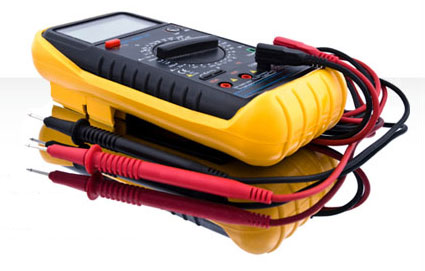If you happen to use test equipment on low voltage electrical systems, your equipment, test leads and systems of work are compliant with the Health and Safety Executive’s Guidance Note GS38.
Much of this advice is taken from the Electricity at Work Regulations 1989, which requires those in control of all or part of an electrical system to ensure it is safe to use and maintained in a safe condition.
However, in June 2015, the HSE published the fourth edition of Guidance Note GS38. Although it has largely remained unchanged, there are a few key amendments that could affect the way you test or the equipment you use.

With this in mind, electrical test equipment distributor Instrotech has taken the liberty to create “GS38 Fourth Edition – What are the changes?” A more detailed explanation of the changes as well as links to useful downloads can also be found on its website.
Major changes
The fourth edition has now been amended to reflect the range of people that work on electrical systems, especially occupations where it’s not a primary activity, such as gas installers.
Live work is also now defined as “any testing or fault finding on live systems,” while other changes include the use of proving units, non-contact voltage detectors, and installation category ratings.
There is also a new section entitled “Test Equipment,” previously called “Design Safety Requirements,” which features in-depth points regarding correct equipment selection.
Accident causes
Issues that were raised since the previous publication have been expanded in the accident causes section. Some of these causes may seem fairly obvious, such as a multimeter being set to the wrong function and inadequate insulation of connectors, but all of which should be considered carefully when test equipment selection is concerned.
Safe Isolation
Changes now reflect the BS EN 61243-3 standard for two-pole voltage indicators, which came into full effect in May 2013. Important points are also raised about the use of multimeters, proving units, and non-contact detectors or volt sticks.
Installation categories
Measurement categories were never specifically mentioned in the previous edition, but there is now an emphasis on the importance of using suitable test leads and equipment.
This is because incorrect ratings for the installation category can and have resulted in serious injury and death. Clarification of the different installation categories (BS EN61010-1 CAT ratings) is also included as a reference.
Specific requirements for test leads
There are now some specific requirements that test leads should comply with according to industry standards and installation categories. This is a consequence of workers swapping over leads from other test equipment that may not be rated to the same category of installation.
Precautions before testing
A new paragraph touches upon the importance of carrying out risk assessments, putting relevant safety measures in place and the use of appropriate PPE.
Examination of equipment
This section highlights the need to perform regular checks of test equipment, which should be carried out by a competent person.
Replacing old test equipment and leads
The fourth edition states that any old equipment or leads that conform to necessary standards will meet the new revisions and be compliant. However, equipment and leads that predate these standards must be maintained to prevent danger and should comply with probes and clips guidance.




